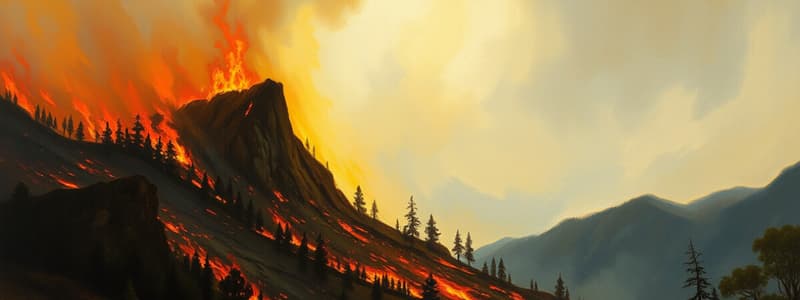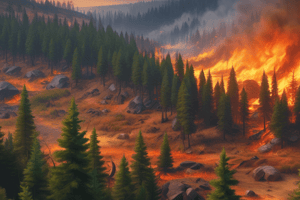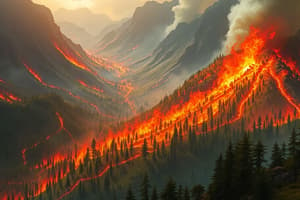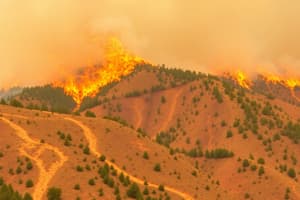Podcast
Questions and Answers
What is the primary challenge posed by topography in managing wildfires?
What is the primary challenge posed by topography in managing wildfires?
- Access to the affected areas (correct)
- The flammability of vegetation in the area
- The speed of fire spread downhill
- The size of the fire crew available
How does fire behavior differ when traveling uphill compared to downhill?
How does fire behavior differ when traveling uphill compared to downhill?
- It creates more convection currents uphill (correct)
- It burns faster downhill due to gravity
- It spreads uniformly in all directions
- It only burns at night when temperatures are lower
In wildfire management, what factors should companies with brush fire potential evaluate?
In wildfire management, what factors should companies with brush fire potential evaluate?
- Community firebase preparedness programs
- Fuel, topography, and exposure to structures (correct)
- Local weather patterns and moisture levels
- Drone availability and surveillance technology
What can be a consequence of a large free-burning fire in terms of its behavior?
What can be a consequence of a large free-burning fire in terms of its behavior?
When assessing an area for fire risk, what should be noted regarding access roads?
When assessing an area for fire risk, what should be noted regarding access roads?
Flashcards are hidden until you start studying
Study Notes
Effects of Topography on Fire Behavior
- Fires burn uphill faster than downhill due to heat and rising flames.
- Uphill fires can create spot fires far down the slope as they crown over peaks.
- Large, intense fires generate their own convection currents, further increasing fire spread.
Challenges of Topography in Wildfire Management
- Access to fire-prone areas can significantly hinder firefighting efforts.
- Companies need to assess brush fire potential by evaluating the following:
- Fuel availability in the area
- Slope and overall topography
- Distance and exposure of structures to potential fire
Key Considerations in Fire Risk Assessment
- Importance of access roads for firefighting apparatus and personnel.
- Identify natural fire breaks which can help in controlling the spread of fire.
- Document potential exposure issues on area maps to aid in strategic planning.
Studying That Suits You
Use AI to generate personalized quizzes and flashcards to suit your learning preferences.




